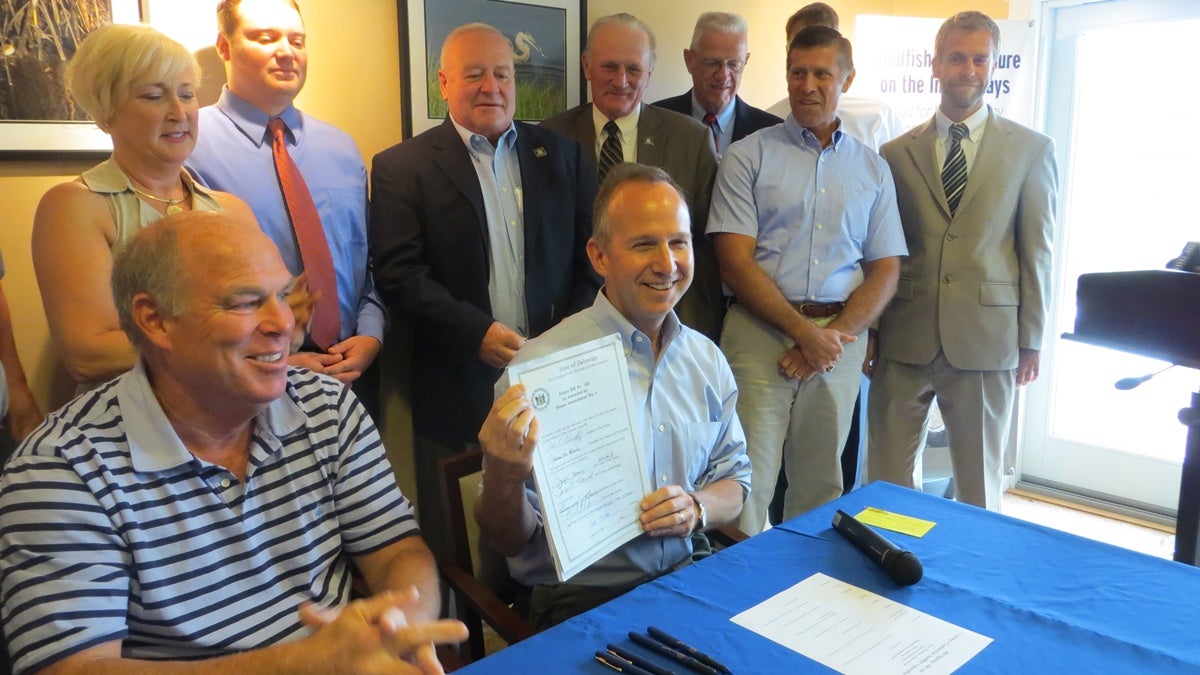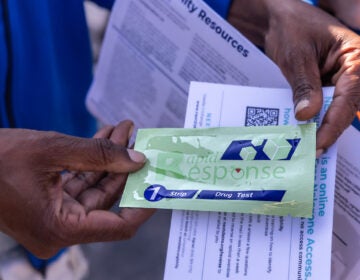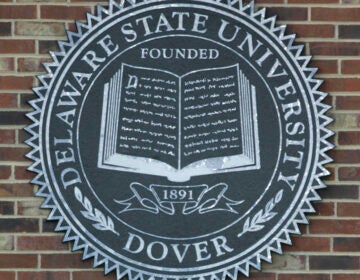Delaware becomes final East Coast state to allow shellfish farming

(Shana O'Malley/for NewsWorks)
With bipartisan support, Delaware became the final state on the East Coast to allow the farming of shellfish.
Governor Jack Markell signed House Bill 160 into law today which finally allows shellfish aquaculture to happen in Delaware’s three inland bays.
Delaware had been the last state bordering the Atlantic Ocean to allow the farming of clams and oysters but the economic and environmental benefits were too good for the state to pass up any longer.
“Supporting this industry represents another example of how we can enact policies that boost our economy and generate millions of dollars for our state, while also better protecting our environment,” said Markell.
Shellfish farming could help the state rake in millions through lease contracts and taxes on the industry.
The Indian River Bay, Rehoboth Bay and Assawoman Bay are public trusts and the land will be leased to farmers for a certain amount of time for the sole purpose of aquaculture.
Chris Bason, executive director for the Center of Inland Bays says the next step is creating regulations and helping farmers get started.
“I know there’s going to be business people and entrepreneurs who are going to be working on their business plans. They’re going to be thinking about leases, where they’d like to farm. Also, there’s going to be people interested in working on developing financial incentives, I think, so that Delaware can support its growers and be competitive with other states like Maryland and New Jersey.”
Additionally, a single Oyster can purify up to 50 gallons of water a day, eliminating harmful nutrients that plague the waterways.
David Saveikis, director of the Delaware Division of Fish and Wildlife explained that DNREC is also doing its part to reduce pollution sources.
“The department is continuing to focus on improving water quality and habitat with stakeholders, through our regulatory process, and there’s been great progress in removing point source pollution sources, wastewater treatment plants that discharge directly into the inlet bays,” explained Saveikis. “Recently, we’re in the process of removing Millsboro’s discharge, in 2014, the Rehoboth discharge will be eliminated from the inlet bays. That’s significant in reducing the nutrient reduction that comes into the inland bays.”
E.J. Chalabala, restoration coordinator for the Center for the Inlet Bays, explained the state took a few pointers from nearby Rhode Island.
“They’re a smaller state than us. They basically have more or less the same coastal lagoon system that we do here,” explained Chalabala. “It’s taken them 15 years and now they have 170 acres (which) is less than 1 percent of our inland bays.”
He added that one acre can host about 750,000 oysters.
It will take approximately a year before the first oyster will go in the water and about two years before the state will see a harvest.
WHYY is your source for fact-based, in-depth journalism and information. As a nonprofit organization, we rely on financial support from readers like you. Please give today.




